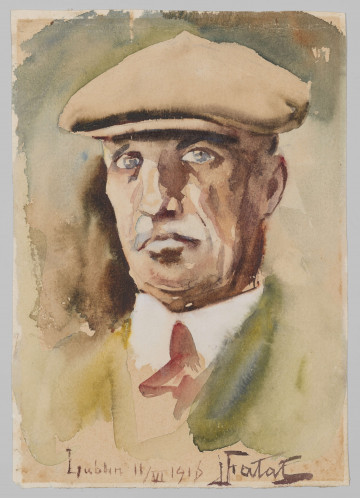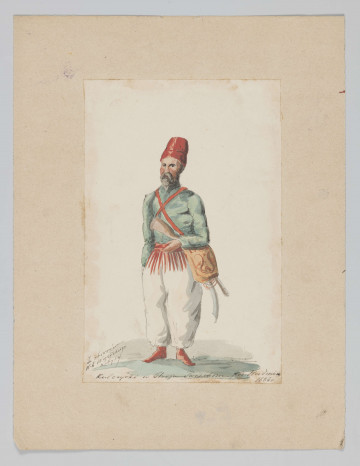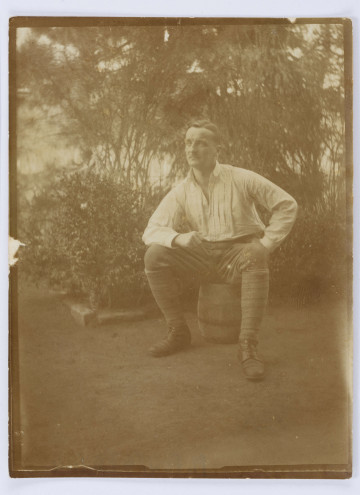
Self-portrait
1916
National Museum in Lublin
Part of the collection: European painting
During the Baroque period, paintings on religious or mythological subjects and portraits – paintings, sculptures, graphics and drawings –enjoyed great popularity. In an era when photography did not yet exist, portraiture provided an opportunity to immortalise the image and character traits of the person portrayed.
Jan Kupecký, a native of Bohemia, became one of the most valued artists associated with European royal courts during the late Baroque period. As early as 1700, the painter opened his atelier in Rome, taking up work as a portraitist. At the same time, during the Roman period, Kupecký became acquainted with the achievements of Italian painting, which ultimately shaped the painter's personality and established his position as a valued portraitist. After twenty years spent in Rome, the artist left Italy and settled in Vienna. Unfortunately, the rivalry between Viennese painters and the fear of religious persecution forced Kupecký and his family to leave Vienna and move to Nuremberg in 1723.
The image of a young man in a red turban, an example of a realistic portrait, comes from this period. The sitter's silhouette is depicted in half-figure cut off from the bottom by the line of the window sill and en face, i.e., his face turned towards the viewer. The artist probably presents the image of his friend, whom he places in the painter's atelier, surrounding him with the attributes of a painter such as an easel or a brush held in his hand. The young painter portrayed by Kupecký is shown in disguise, which allowed the artist to show off his painting skills in reproducing the structures of various materials. The attention is drawn not only by the virtuoso draping of the fabrics but also by the fancifully tied red turban on the man's head. The elaborately draped fabric, which, if necessary, was fancifully rolled up, is an early Dutch male headdress, called chaperon, in the form of a hood-cloak.
Author / creator
Dimensions
cały obiekt: height: 20,5 cm, width: 28,5 cm
Object type
painting
Technique
oil technique
Material
canvas, oil-based paint
Creation time / dating
Creation / finding place
Owner
The National Museum in Lublin
Identification number
Location / status

1916
National Museum in Lublin

National Museum in Lublin

1901 — 1930
National Museum in Lublin
DISCOVER this TOPIC
Museum of King Jan III's Palace at Wilanów
DISCOVER this PATH
Educational path